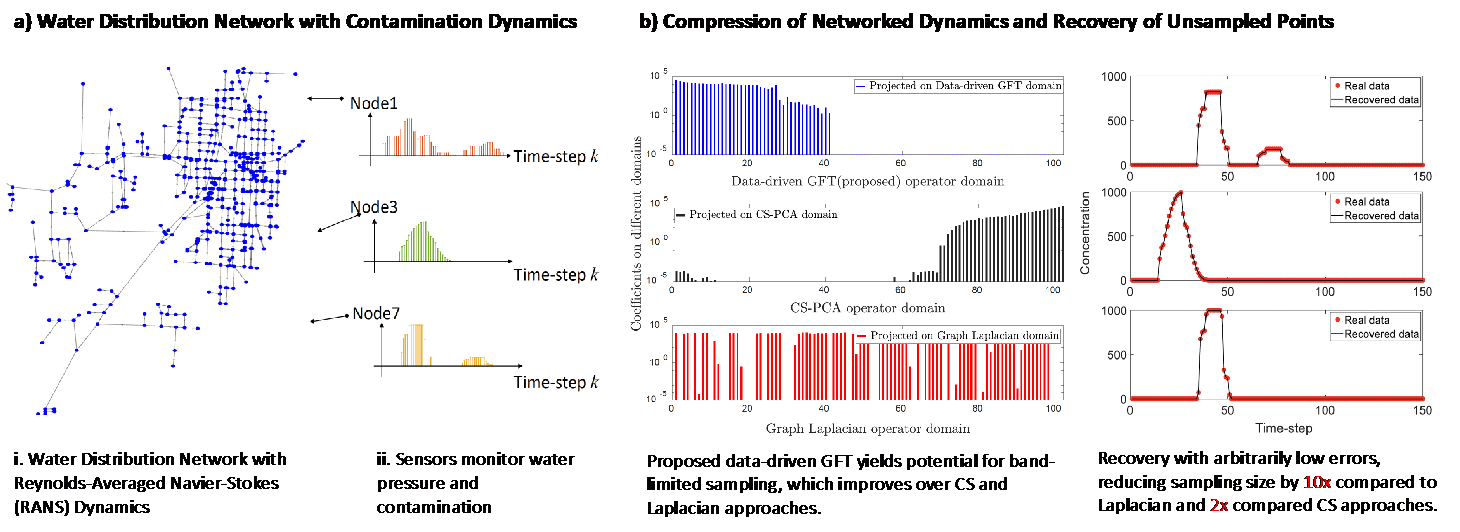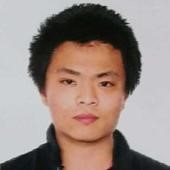Minimum Data Sensing Enables Sustainable Digital Twins for Smart Cities
by Prof. Weisi Guo, Mr. Zhuangkun Wei, Dr. Alessio Pagani
Statement of the Challenge and Opportunity
Cities are a multiplex of both aging and smart infrastructure, both of which require precise data to enable monitoring and adaptivity. The drivers for aging infrastructure include public safety, insurance, and economic sustainability. The drivers for smart infrastructure include the above, as well as being able to provide user-centric services. In order to achieve both predictive maintenance and user-centric services, data fusion from a wide range of sensors and smart devices are required and used to inform engineering simulation models. These Digital Twins are data-driven digital models of real systems - seen as a key enabler for data-driven smart city services. In order to collect both performance and demand data across multiple infrastructures (e.g., mobility, water, electricity, telecommunication), the number of monitoring nodes is potentially enormous. This threatens the economic and environmental sustainability of digital twins both from a sensor deployment as well as from a data communication and processing perspective.
In connected systems, the underlying coupled dynamics enable us to infer the dynamics at one point from another. Across the system, this gives the complete dynamics a compressible characteristic (e.g. the dynamics from N points can be expressed as a combination of r<N points). Here we demonstrate that sparse sensing can achieve accurate inference from a small set of sensor data. Compressed Sensing (CS) [1] is a technique to optimally extract the essential data from a larger set of input data, dramatically reducing the number of sensors and amount of data at the front end. The current gaps in knowledge are as follows:
- The compression techniques such as CS often do not achieve the potential of the low rank data;
- The compressed nodes are not spatially invariant in CS approaches.
By exploiting the networked infrastructure structure, recent advances in Graph Signal Processing (GSP) [2] can potentially answer some of the above challenges. In particular, how can we efficiently compress a graph with signal dynamics and inform us of where to monitor using Internet-of-Things (IoT) enabled sensors?
Case Study: Water Distribution Network (WDN) Monitoring
Leveraging on the example of water distribution networks, failure to respond to a variety of demand and climate stressors can lead to a £40bn cost in emergency response for cities in the UK [9]. For water contamination monitoring – see Figure 1a, efforts to fully understand optimal data collection as a function of both the complex network topology and the interconnected internal transport dynamics are still limited and inaccurate. Installing an Internet-of-Things (IoT) monitoring sensor in each junction would be the obvious solution to monitor various dynamic states.
Technological Innovation
Current State-of-the-Art (SotA) in infrastructure monitoring can largely be divided into 3 distinctively different approaches:
- Engineering numerical optimisation: iterative scenario testing finds the union of all critical nodes [3]
- Graph theory: topology dominated approach enables sampling using the Laplacian [4]
- Graph signal processing: compressing networked dynamics using either data- [5] or equation-driven approaches [6].
Within the field of CS and GSP, there remains many approaches. For a matrix data X of size N x K (e.g. N is no. of nodes and K is no. of time-steps) with rank r, it has proved that, for all CS methods [2], the theoretically minimum number of samples needed is (N+K-r) x r, and a nuclear-norm based convex optimization can be used to recover X. In the context of an N node network with signal dynamics, this means for each time-step, an average of (N+K-r) x r/K sensors are used. As such, a general operator can find the minimum sample points which are dynamic over time [7,8], which is useful for power cycling sensors and saving energy in both sampling and data transmission. This has been demonstrated in water distribution networks [7,8].
Despite power cycling, the cost of sensors remain high as many are needed. As such, there are two potential challenges set out above: (1) achieve low rank r nodes for sampling, and (2) achieve spatially invariant nodes for sampling to reduce sensor deployment cost. The key innovation is to show that fixed nodes can represent the evolving dynamic of real systems, because of the underlying physics of the system.
 Figure 1: (a) WDN with complex topology and cascade dynamics, (b) compression of networked dynamics to find invariant bandlimited sampling points and recovery of dynamics in unsampled points.
Figure 1: (a) WDN with complex topology and cascade dynamics, (b) compression of networked dynamics to find invariant bandlimited sampling points and recovery of dynamics in unsampled points.
More recent approaches developed in Graph Fourier Transform (GFT) enables spatially invariant points to inform us of the dynamics of a network [5] – see Figure 1b. This is novel and important for achieving minimum sensors on a network, because it enables the following:
- Fixed node locations for monitoring a complex network with dynamics
- Low number of nodes for monitoring low rank dynamics
- Linear scaling with rank of the dynamics
Importance
This enables us to inform WDN operators where best to put sensors given a particular perturbation scenario. More importantly, given the high cost of WDN monitoring sensors (e.g., £160 for pH sensor, and £270 for dissolved oxygen sensor), our sparse sampling approach can reduce the cost of sensor deployment to 30% compared to deploying sensors everywhere. Within IEEE Smart Cities, this fits with a variety of functional domains (sensors, communication networks, and data analytics) and application domains (energy, water, and mobility).
Process of Deployment and Implementation
We are currently working with water distribution network (WDN) operators to try this approach of minimum sampling for a variety of UK and global WDN topologies, demand cycles, and contamination situations. We believe this data-driven approach can complement existing engineering knowledge to create significant energy and cost savings in digital twin modeling, especially in urban environments where the infrastructure density is high.
Risks and Impact
One of the risks is that the dynamics of the network change in a way that is not accounted for in our analysis. This can happen due to structural upgrades, change of operational procedure, or dramatic shift in demand patterns. Whilst this affects all sensor placement strategies, it is an unquantifiable risk that will become more apparent over time. As such, creating robust sparse sensor placement with uncertainty quantification is important. The impact of this work on future digital twin systems in smart cities will be to achieve rapid scaling without overwhelming sensors, communication, and data storage.
References
-
“Graph signal processing: Overview, challenges, and applications,” A. Ortega, P. Frossard, J. Kovacevic, J. Moura, P. Vandergheynst, Proceedings of the IEEE, 2018
-
“Multi-way Compressed Sensing for Sparse Low-Rank Tensors,” N. Sidiropoulos, A. Kyrillidis, IEEE Signal Processing Letters, 2012
-
“Sensor Placement in Municipal Water Networks,” J. Berry et al., Journal of Water Resources Planning and Management, 2005
-
“Sensor Placement in Water Distribution Networks based on Spectral Algorithms,” A. Di Nardo, C. Giudicianni, R. Greco, M. Herrera, G. Santonastaso, A. Scala, Int. Conference on Hydroinformatics, 2018
-
"Optimal Sampling of Water Distribution Network Dynamics using Graph Fourier Transform," Z. Wei, A. Pagani, G. Fu, I. Guymer, W. Chen, J. McCann, W. Guo, IEEE Transactions on Network Science and Engineering, 2019
-
"Optimal Sampling for Dynamic Complex Networks with Graph-Bandlimited Initialization," Z. Wei, B. Li, W. Guo, IEEE Access, 2019
-
"Energy Efficient Sensor Activation for Water Distribution Networks Based on Compressive Sensing," R. Du, L. Gkatzikis, L. Gkatzikis, C. Fischione, M. Xiao, IEEE Journal on Selected Areas in Communications, 2015
-
"Monitoring Networked Infrastructure with Minimum Data via Sequential Graph Fourier Transforms," Z. Wei, A. Pagani, W. Guo, IEEE International Smart Cities Conference, Morocco, Oct 2019
-
“Preparing for a drier future: England's water infrastructure needs,” UK National Infrastructure Commission, 2018.
Contributers
 |
Weisi Guo (S07, M11, SM17) received his MEng, MA, and Ph.D. degrees from the University of Cambridge. He is Chair Professor of Human Machine Intelligence at Cranfield University, and was an Ass. Prof. at University of Warwick. He is CI on EPSRC Doctoral Training Centre in Urban Science & Progress, and PI on over £2.3m of research grants from EPSRC, H2020, InnovateUK, and Royal Society. He has published over 130 papers and his research has won him awards (IET Innovation, Bell Labs Prize finalist, IEEE best paper). He is FRSS and a Turing Fellow at the Alan Turing Institute. |
 |
Zhuangkun Wei received his bachelor's degree, and master's degrees in Electronic Engineering from Beijing University of Posts and Telecommunications (BUPT), Beijing, China in 2014 and 2018 respectively. He is currently pursuing the Ph. D degree at the University of Warwick. His research interests cover molecular signals and graph signal processing. |
 |
Alessio Pagani received his bachelor's, master's, and Ph.D. degrees in electronic and computer engineering from Politecnico di Milano. He is a research fellow on the CHANCE project at the Alan Turing Institute. His current research includes the development of new methods to improve the resilience and sustainable long-term performance of man-made complex systems, helping to understand the implications of inter-dependencies within and between complex adaptive systems. |
13 November 2019
Past Issues
To view archived articles, and issues, which deliver rich insight into the forces shaping the future of the smart cities. Older eNewsletter can be found here. To download full issues, visit the publications section of the IEEE Smart Cities Resource Center.

